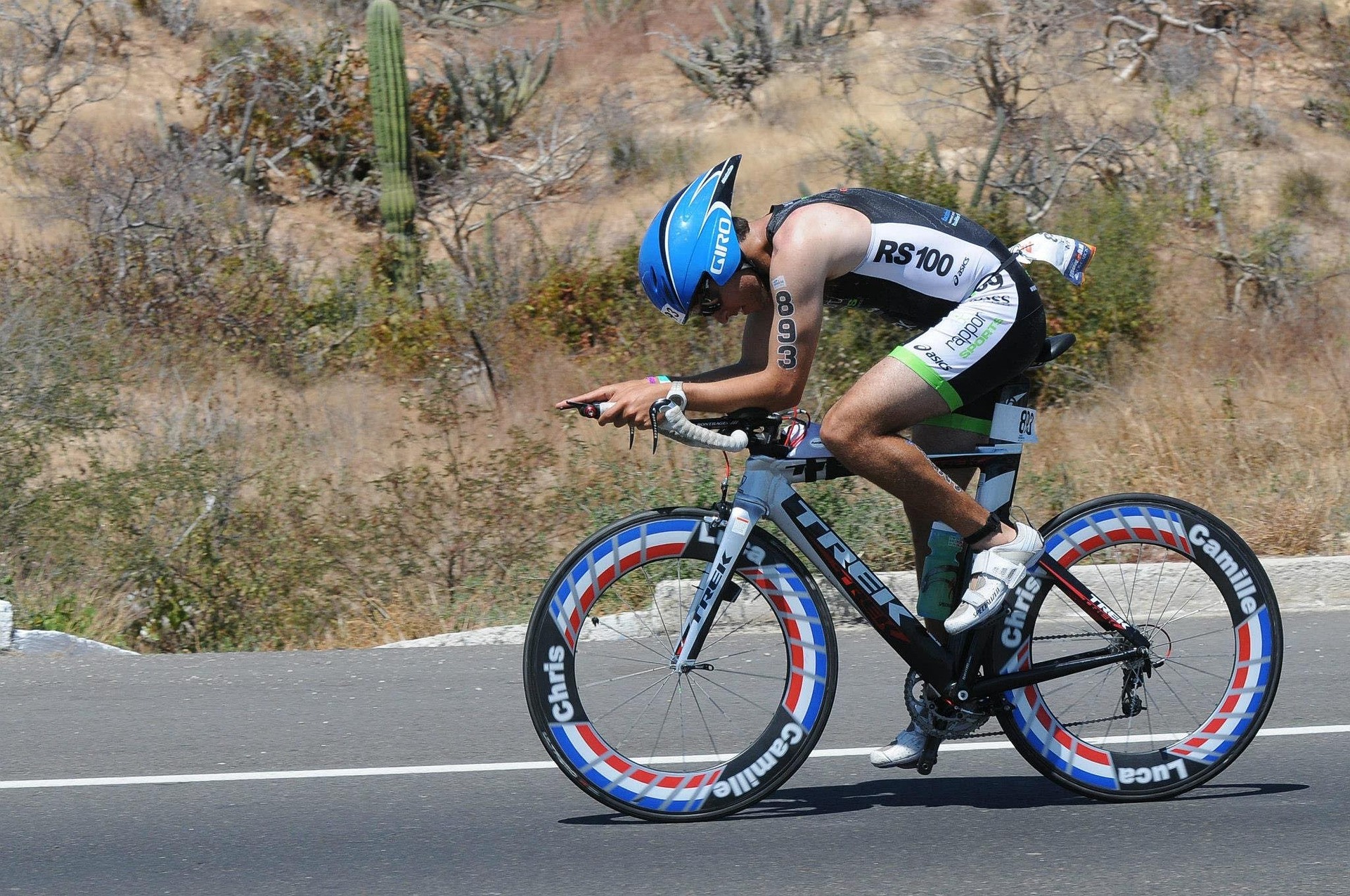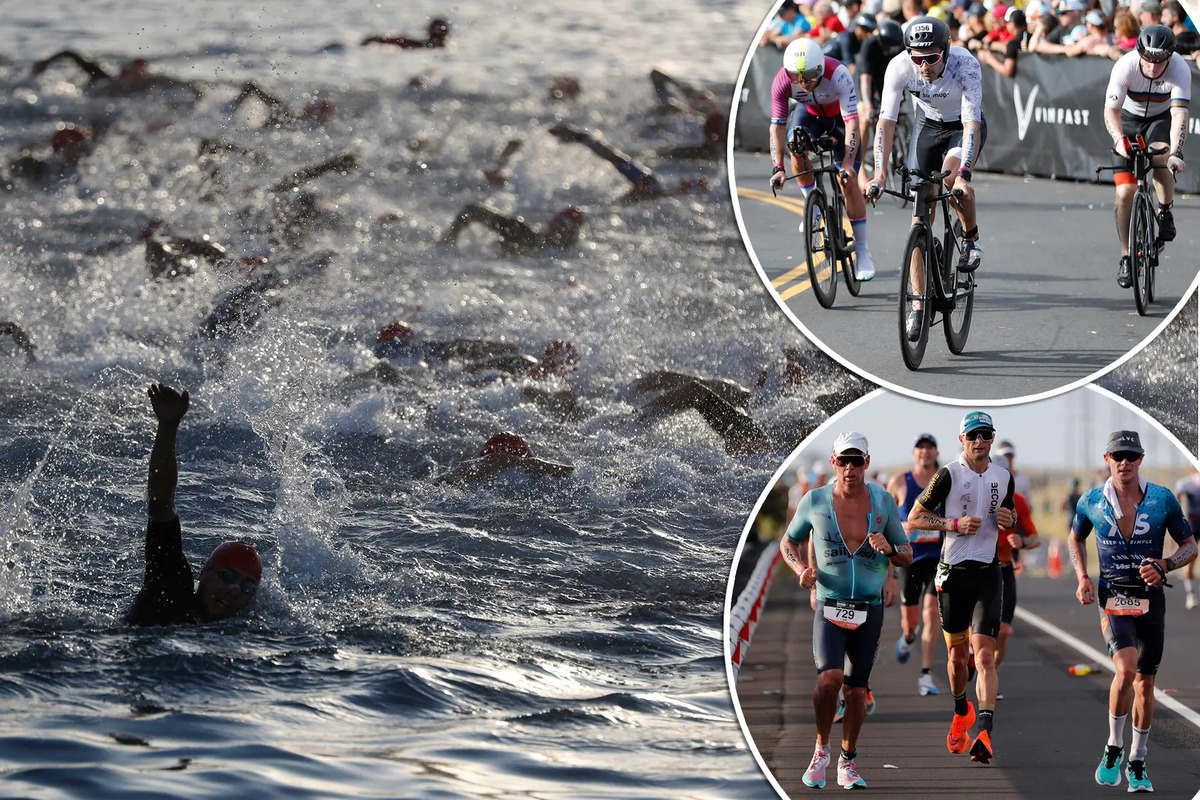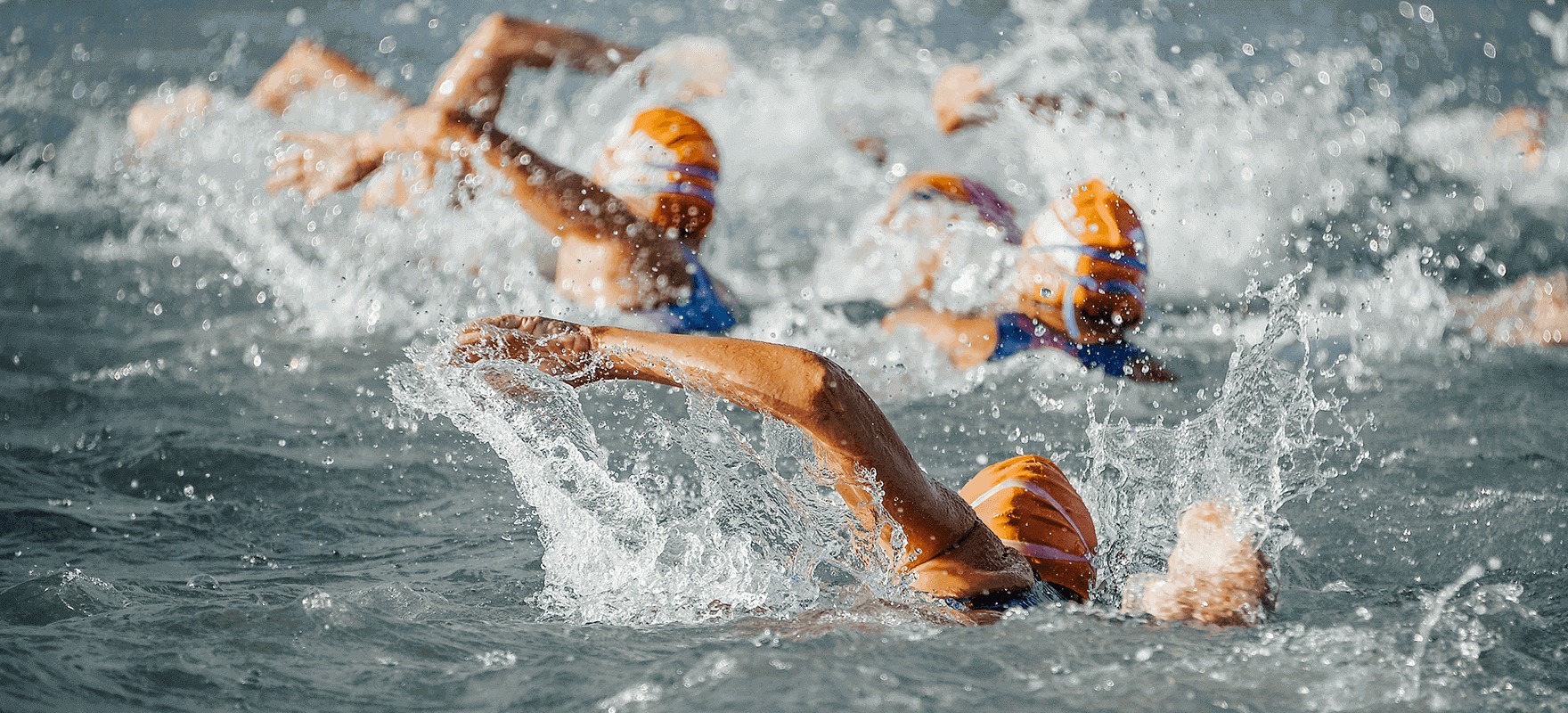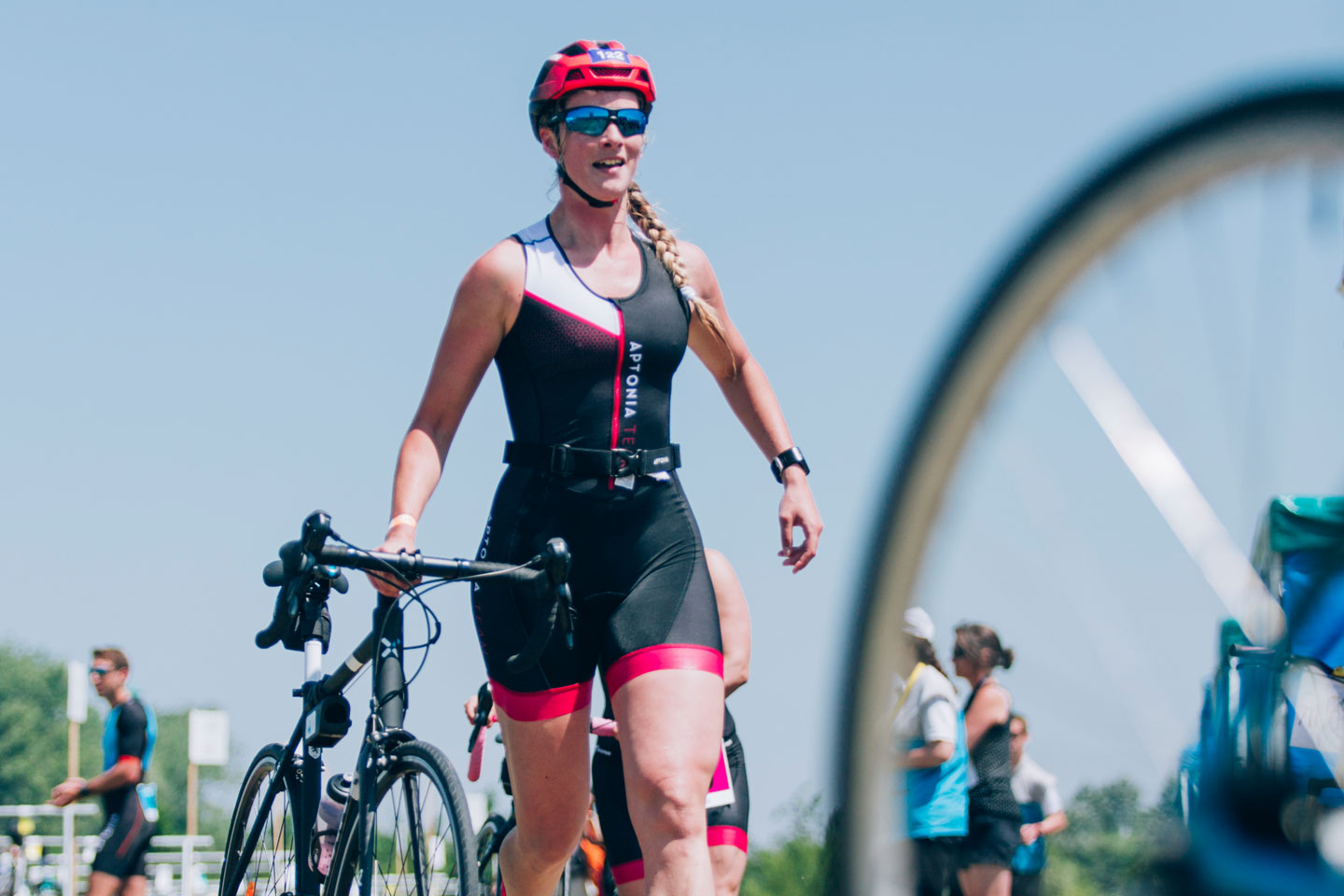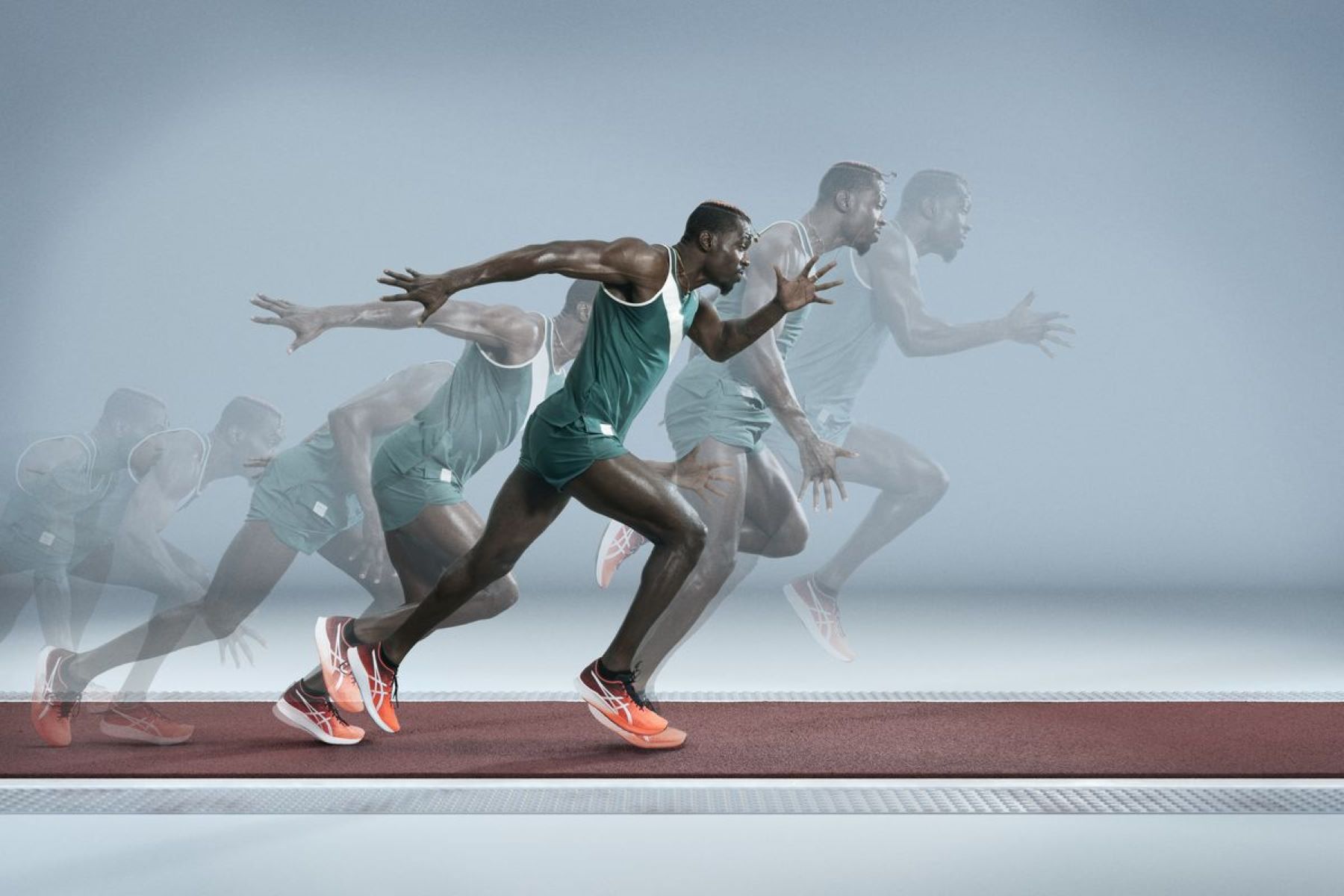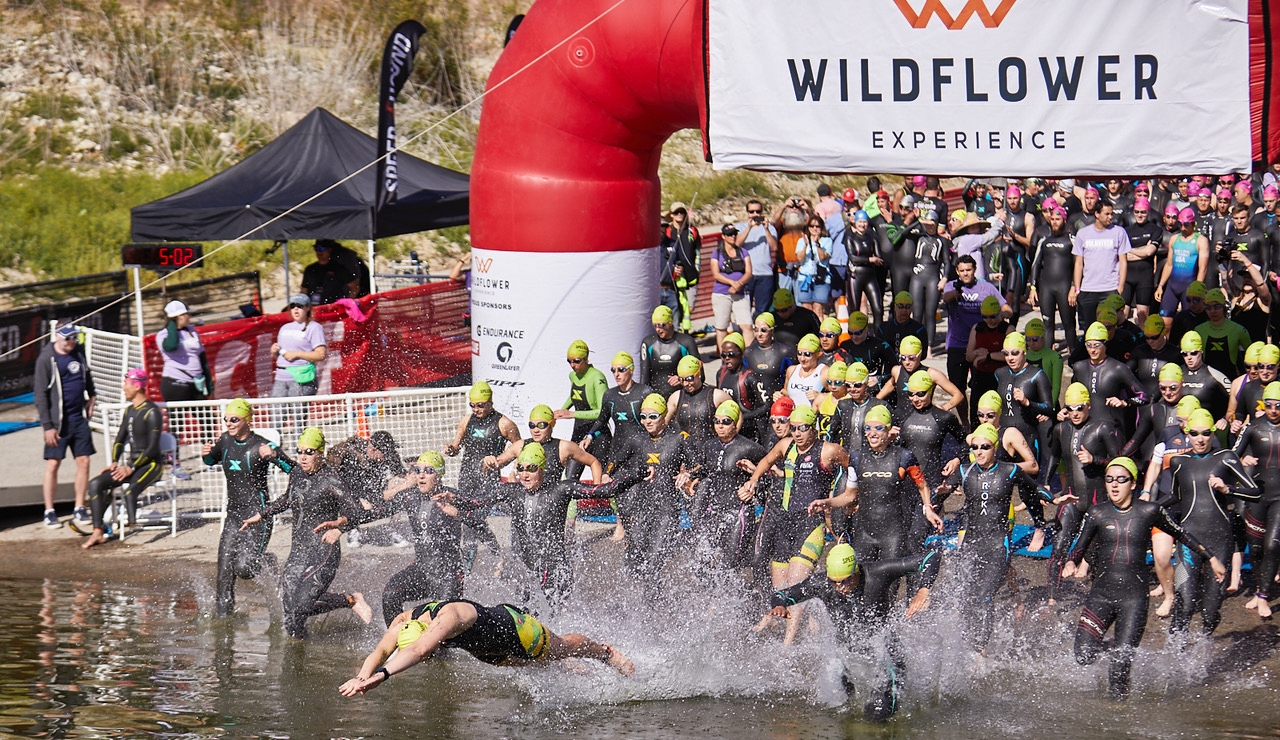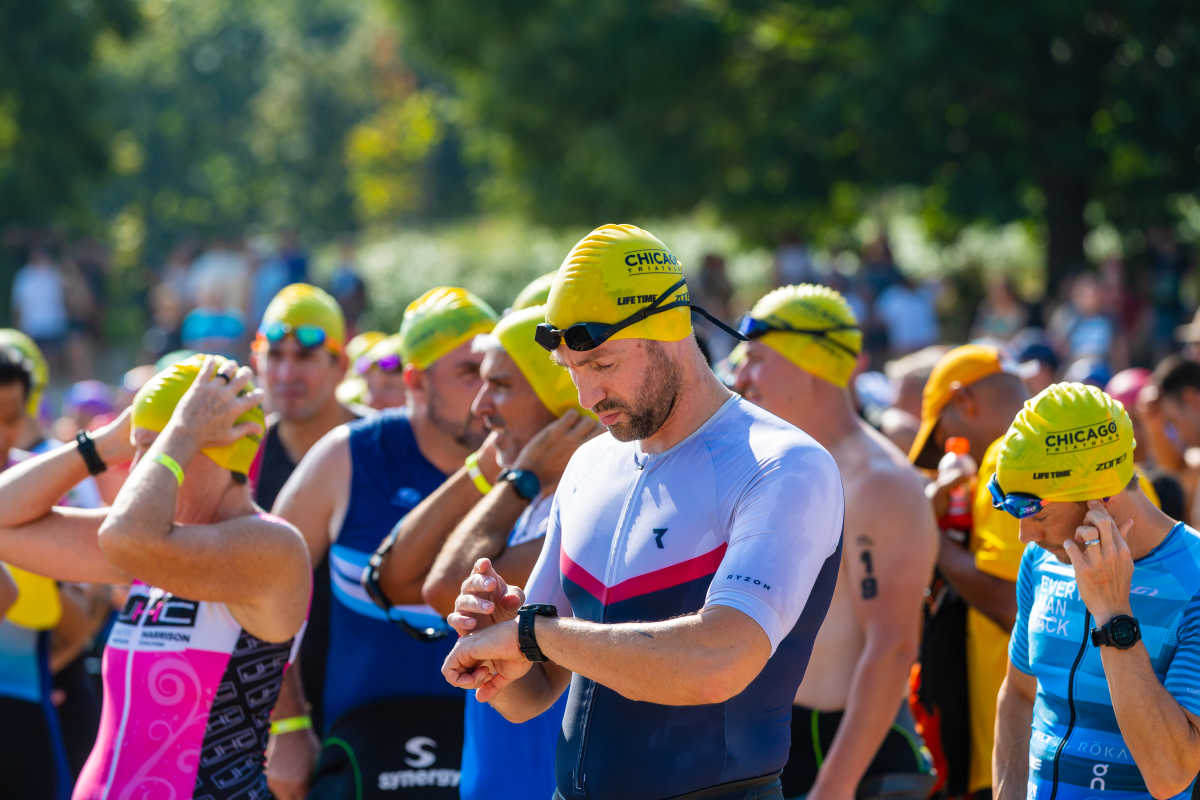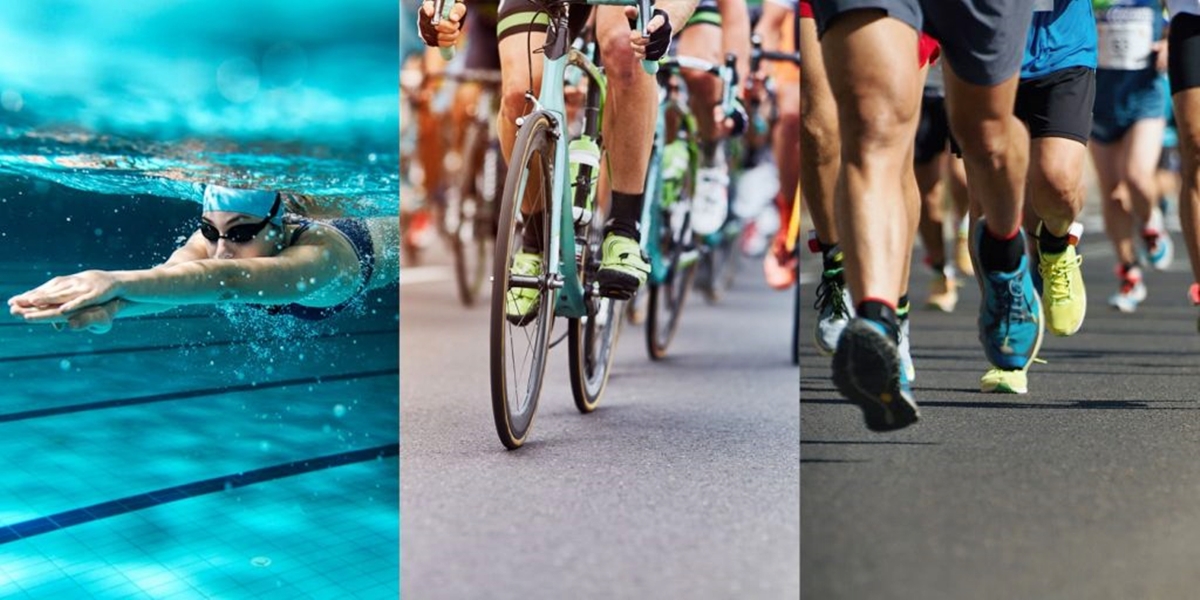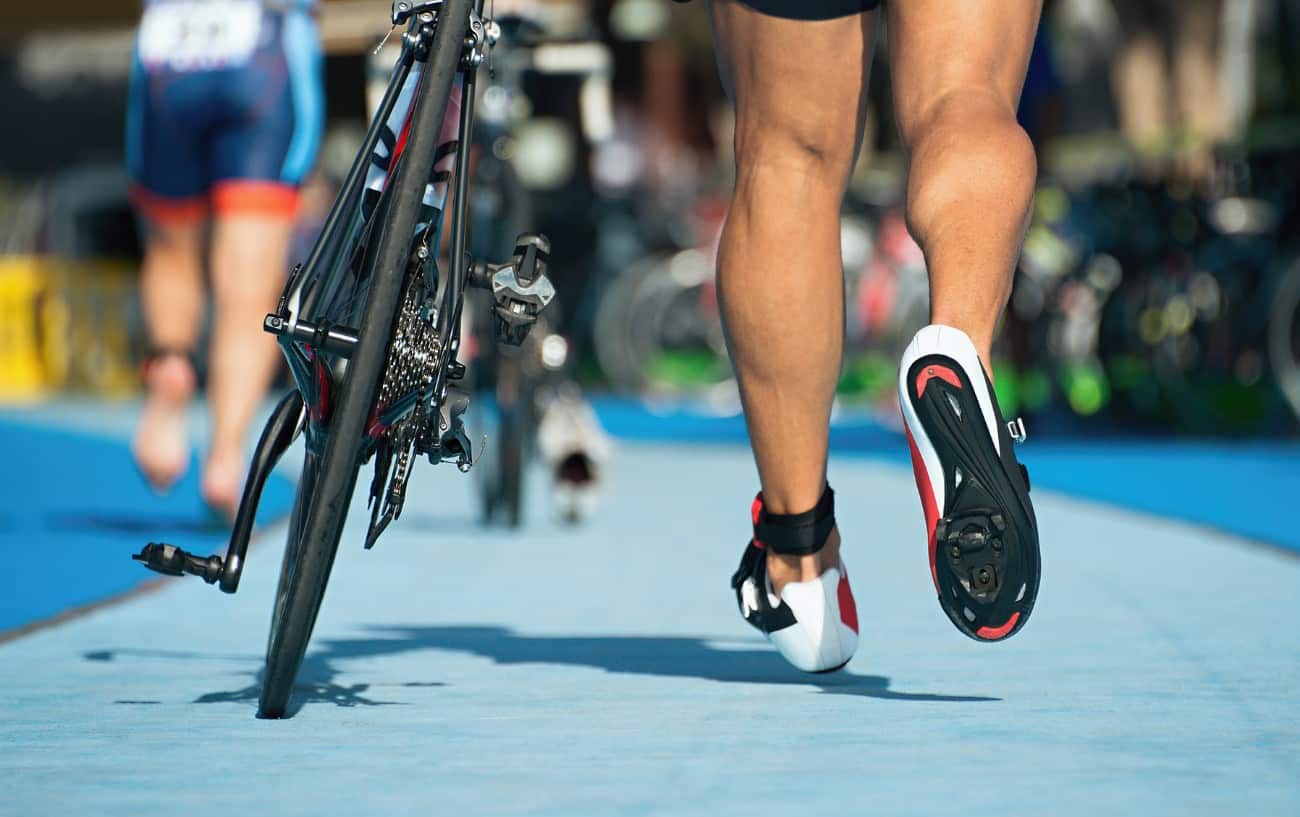

Featured
How Long Does Sprint Triathlon Take
Modified: January 22, 2024
Discover how long it takes to complete a sprint triathlon in this featured article. Get insights on average times and tips to improve your performance.
Introduction
A sprint triathlon is a multi-sport event that consists of three continuous and sequential disciplines: swimming, cycling, and running. It is a shorter distance triathlon compared to the standard or Ironman distances, making it a popular choice for beginners or those looking to challenge themselves physically and mentally.
Participants in a sprint triathlon can expect a demanding but exhilarating experience that tests their endurance, speed, and versatility. Completing a sprint triathlon can provide a tremendous sense of accomplishment and serve as a stepping stone for those interested in pursuing longer-distance triathlons.
While each leg of the sprint triathlon requires its own unique skill set and training, the overall goal is to complete the race in the fastest time possible. The duration of a sprint triathlon can vary depending on various factors such as the individual’s fitness level, experience, and race conditions.
In this article, we will explore the different components of a sprint triathlon and discuss the time it typically takes to complete each leg. We will also delve into the various factors that can influence a participant’s overall triathlon time and provide some tips to improve performance. Whether you’re a beginner considering your first sprint triathlon or a seasoned triathlete looking to set a new personal record, this article will provide valuable insights to help you prepare and compete.
What is a Sprint Triathlon?
A sprint triathlon is a popular and accessible form of triathlon that involves three sequential disciplines: swimming, cycling, and running. While the distances can vary slightly depending on the event, a typical sprint triathlon consists of a 750-meter swim, a 20-kilometer bike ride, and a 5-kilometer run.
The swim leg of a sprint triathlon takes place in open water, such as a lake or the sea, or in a pool for indoor events. Participants start at the same time and swim in a designated course marked by buoys. The swim leg may have different wave starts to avoid overcrowding in the water, ensuring a safe and organized race. Swimmers are typically allowed to use any stroke of their choice, and the use of wetsuits is allowed in colder water conditions.
After completing the swim leg, participants transition to the bike leg. This portion of the race involves cycling a set distance on a road or course specified by the event organizers. Participants must follow traffic rules and ensure their bikes are in good working condition. Drafting, or following closely behind other cyclists to reduce wind resistance, is not allowed in most sprint triathlon events. Helmets are mandatory during the bike leg for safety reasons.
Once the bike leg is completed, participants transition to the final leg of the sprint triathlon: the run. The run leg is typically a 5-kilometer distance and takes place on a designated running course. Participants must complete the run on foot, without any external aid such as bikes or rollerblades. The use of headphones or music devices may be restricted in some events for safety reasons.
Throughout the entire triathlon, participants must transition between each leg efficiently. These transition areas are marked with swim-to-bike and bike-to-run signs, and participants are allotted a specific area to store their equipment. Transition times are a crucial component of the overall triathlon time and can significantly impact a participant’s final result.
Sprint triathlons provide a unique and exciting challenge for participants of all fitness levels. The shorter distances make them a popular choice for beginners looking to test their physical abilities in a multisport event. They also serve as a valuable stepping stone for athletes aiming to progress to longer-distance triathlons.
Now that we understand the basics of a sprint triathlon, let’s explore the individual legs of the race and the time it takes to complete each one.
Swim Leg
The swim leg of a sprint triathlon is the first discipline in the race. It typically involves swimming a distance of 750 meters, although this may vary depending on the event. The swim leg can take place in open water, such as a lake, river, or the ocean, or in a pool for indoor events.
Participants start the swim leg in a wave start format, entering the water together and swimming in a designated course marked by buoys. The type of stroke used is generally left to the participant’s discretion, allowing for freestyle, breaststroke, backstroke, or even a combination of different strokes.
Swimming in open water presents its own set of challenges compared to pool swimming. Factors such as currents, waves, and water temperature can impact swim times and require additional skills and preparation. Many triathletes choose to wear wetsuits during open water swims, which provide buoyancy and insulation.
The time it takes to complete the swim leg varies depending on individual skill level and experience. Elite swimmers can finish the 750-meter swim in under 10 minutes, while recreational participants may take closer to 20 minutes or longer.
Transition times play a crucial role in a triathlon, and the swim-to-bike transition is no exception. Participants must efficiently exit the water, remove their wetsuit (if worn), and make their way to the transition area where their bike is waiting. Developing efficient transition techniques can help minimize time spent in this phase and contribute to an overall faster race time.
Swim training is essential for performing well in the swim leg of a sprint triathlon. It’s important to practice in open water to acclimate to the conditions and develop skills specific to open water swimming. Building endurance, improving stroke technique, and incorporating interval training can also enhance swim performance.
Overall, the swim leg of a sprint triathlon is a challenging yet rewarding component of the race. It requires solid swimming skills, endurance, and the ability to adapt to open water conditions. By dedicating time to swim training and focusing on efficient transitions, participants can set themselves up for success in the remaining legs of the triathlon.
Bike Leg
The bike leg is the second discipline in a sprint triathlon, following the swim leg. Participants transition from the swim to the bike leg and embark on a cycling route typically spanning 20 kilometers, although distances may vary depending on the event.
The bike leg takes place on a designated course, usually on public roads or closed-off routes specifically allocated for the triathlon. Participants must adhere to traffic rules and ensure their bikes are in good working condition before the race. Helmets are mandatory for safety reasons and should be worn throughout the bike leg.
The duration of the bike leg varies depending on a variety of factors, including the terrain, weather conditions, and the participant’s cycling abilities. Elite cyclists can complete the 20-kilometer bike leg in under 30 minutes, while recreational participants may take closer to 45 minutes to an hour.
It’s important to pace oneself during the bike leg to ensure enough energy is left for the final run leg. Participants can choose to ride in aero positions on triathlon-specific bikes or use road bikes. Drafting, where participants ride closely behind one another to reduce wind resistance, is generally not allowed in most sprint triathlon events.
Transitioning from the bike leg to the run leg, known as the bike-to-run transition, requires careful preparation and efficient execution. Participants must dismount their bikes, store them securely in the transition area, and put on their running gear. Practicing smooth transitions can help save valuable time and energy.
To improve performance in the bike leg, incorporating cycling-specific training is crucial. This can involve building endurance through long rides, working on speed and power through interval training, and practicing climbing and descending techniques to handle varied terrains.
Proper bike fit and positioning are also important to ensure comfort and optimize power output during the bike leg. Regular bike maintenance, including checking tire pressure, brakes, and gears, is essential to minimize the risk of mechanical issues during the race.
The bike leg of a sprint triathlon is an exciting and challenging endeavor that requires a combination of physical fitness, technical skills, and mental focus. By dedicating time to cycling training, perfecting transitions, and maintaining their equipment, participants can maximize their performance on the bike leg and set themselves up for a successful run leg.
Run Leg
The run leg is the final component of a sprint triathlon, following the swim and bike legs. Participants transition from the bike leg to the run leg and embark on a typically 5-kilometer run, although distances may vary depending on the event.
The run leg takes place on a designated course, often a combination of road and off-road terrain. Participants must rely solely on their own physical abilities, without the aid of bicycles or other equipment. The duration of the run leg varies depending on individual fitness, experience, and the course’s level of difficulty.
Completing the 5-kilometer run leg can take anywhere from 20 to 40 minutes or longer, depending on factors such as fitness level, running technique, course conditions, and fatigue accumulated from the previous swim and bike legs.
Maintaining a consistent and manageable pace is crucial during the run leg to prevent early exhaustion and maintain energy for the final stretch. Hydration stations along the course provide participants with the opportunity to fuel up and stay hydrated, essential for optimal performance.
Transitioning from the bike leg to the run leg, known as the bike-to-run transition, can be challenging as the body adapts to the change in movement and muscle focus. Participants should practice transitioning smoothly, including removing their cycling gear, putting on appropriate running attire, and mentally preparing for the run.
Training specifically for the run leg is essential to improve performance and endurance. Incorporating regular running workouts into training routines, such as interval training, tempo runs, and long-distance runs, can help build stamina and improve running efficiency.
Proper running form and technique are also important to prevent injury and optimize performance. Developing a balanced stride, maintaining an upright posture, and focusing on breathing techniques can help runners maintain a steady pace and conserve energy.
Mental stamina plays a significant role in completing the run leg of a triathlon. Participants must push through fatigue and mental barriers to reach the finish line. Setting goals, visualizing success, and staying focused on the present moment are strategies that can help participants stay motivated during the final leg of the race.
The run leg of a sprint triathlon is a rewarding but challenging experience. It requires participants to dig deep and summon their physical and mental strength to bring the race to a close. By incorporating specific run training, perfecting transitions, and maintaining mental focus, participants can complete the sprint triathlon with pride and accomplishment.
Transition Time
In a sprint triathlon, transition time refers to the time it takes for participants to switch between the swim, bike, and run legs of the race. Transition times are a crucial component of the overall triathlon time and can significantly impact a participant’s final result.
There are two transition periods in a sprint triathlon: the swim-to-bike transition (T1) and the bike-to-run transition (T2). Participants must efficiently navigate these transitions to minimize the time spent and maintain a competitive edge.
During the swim-to-bike transition, participants exit the water and make their way to the transition area where their bike is waiting. They must remove their wetsuit (if worn) and put on cycling gear, including shoes, helmet, and any other necessary equipment. The time spent in T1 can vary depending on factors such as wetsuit removal, equipment organization, and overall preparedness. Efficient T1 times range from a few minutes for experienced triathletes to five minutes or more for beginners.
After completing the bike leg, participants move from the bike-to-run transition area. Here, they must dismount their bikes, securely store them, remove their cycling gear, and put on running shoes and any additional equipment needed for the run leg. Like T1, the time spent in T2 can vary depending on the participant’s preparation, organization, and transition technique. Efficient T2 times range from a few minutes to five minutes or more.
To improve transition times, participants can practice the specific steps involved in each transition. This includes rehearsing the process of removing and donning equipment swiftly, organizing their gear in a logical and easily accessible manner, and mentally visualizing the flow of each transition. Regularly practicing transitions during training sessions can help develop muscle memory and improve efficiency on race day.
Setting up the transition area strategically is also crucial. Participants should ensure their bike is properly racked, with helmet, shoes, and other gear arranged in a manner that allows for quick and seamless access. Familiarizing oneself with the transition area layout before the race can help minimize confusion and save valuable time during transitions.
While it’s important to aim for efficient transitions, it’s equally crucial to maintain focus and composure during this fast-paced portion of the race. Rushing through transitions can lead to mistakes or forgotten equipment, potentially compromising overall performance. By remaining calm and composed, triathletes can execute smooth transitions while staying mentally prepared for the next leg.
Transition times may differ among participants based on their individual goals and strategies. Some prioritize speed and aim for quick transitions, whereas others may take a bit longer to ensure they have everything they need for each leg. Ultimately, finding the right balance between speed and preparedness is key.
Transition times are an essential consideration in sprint triathlons. By practicing efficient transitions, preparing the transition area strategically, and maintaining focus, participants can optimize their overall triathlon time and achieve their race-day goals.
Factors Affecting Sprint Triathlon Time
The time it takes to complete a sprint triathlon can vary significantly among participants. Several factors contribute to the overall triathlon time, including individual fitness level, experience, and external conditions. Understanding these factors can help participants gauge their performance and make informed decisions during training and the race itself.
1. Fitness Level: The fitter an individual is, the faster they can typically complete a sprint triathlon. Regular training that includes cardiovascular exercise, strength training, and sport-specific workouts is crucial for building endurance and improving performance in each discipline.
2. Experience: Experienced triathletes often have better race strategy, more efficient transitions, and superior pacing techniques. With time, they acquire the ability to judge their effort levels accurately, ensuring they don’t exert too much energy too early in the race.
3. Swimming Ability: Proficiency in swimming plays a significant role in overall triathlon time. Individuals with excellent swimming technique and cardiovascular endurance will naturally have faster swim times. For those who struggle with swimming, investing time in swim-specific training can lead to substantial improvements.
4. Cycling Efficiency: Cycling speed and efficiency are influenced by factors such as aerobic capacity, leg strength, bike handling skills, and bike fit. Participants can enhance their cycling performance by focusing on these aspects in training and ensuring their bike is properly fitted to their body measurements.
5. Running Skills: Running speed and endurance are critical components of a sprint triathlon. Factors such as running form, technique, muscular strength, and endurance training come into play. Regular running workouts and incorporating interval training can help improve running performance.
6. Environmental Conditions: External factors like weather conditions, temperature, humidity, wind, and course elevation can significantly impact triathlon times. Extreme heat or strong winds can make the race more challenging, potentially affecting performance.
7. Nutrition and Hydration: Proper fueling and hydration are essential for optimal performance during a sprint triathlon. Adequate intake of carbohydrates and fluids before, during, and after the race can help maintain energy levels, prevent dehydration, and delay fatigue.
8. Mental Stamina: The mental aspect of a sprint triathlon should not be underestimated. Mental toughness, focus, and the ability to push through fatigue and discomfort play a crucial role in achieving a faster triathlon time. Mental preparedness and visualization techniques can enhance overall performance.
9. Race Strategy: Individual race strategies can vary, with some participants aiming for a faster swim or bike time, while others focus on a strong run leg. Proper pacing, conserving energy, and managing effort across all disciplines are crucial for maintaining a consistent performance throughout the race.
10. Transition Efficiency: Quick and efficient transitions can save valuable time during a triathlon. Practicing transitions and organizing gear in a logical and accessible manner can help minimize time spent in transition areas.
It’s important to note that each participant’s goals and abilities are unique. The focus should be on personal improvement rather than comparing times with others. By addressing these factors and tailoring training and preparation accordingly, participants can aim for their personal best and enjoy a successful sprint triathlon experience.
Training for a Sprint Triathlon
Preparing for a sprint triathlon requires a well-rounded training approach that covers all three disciplines: swimming, cycling, and running. With proper training and preparation, participants can improve their fitness, build endurance, and enhance their performance on race day.
1. Design a Training Plan: Developing a structured training plan is essential to ensure consistent progress and avoid overtraining. The plan should include a mix of swimming, cycling, and running workouts, as well as rest days for recovery. Gradually increase the intensity and duration of training sessions over time to build endurance.
2. Swim Training: Include regular swim sessions in your training routine to improve technique, stamina, and speed. Practice open water swimming to acclimate to the conditions you may encounter during the race. Drills focusing on technique, interval training, and longer endurance swims can all contribute to swim improvement.
3. Cycling Training: Incorporate cycling workouts to build leg strength, cardiovascular endurance, and power. Include a combination of long rides, hill training, interval training, and tempo rides to improve speed and stamina. Practice riding in different terrains and conditions to adapt to various race scenarios.
4. Running Training: Regular running workouts are crucial to develop running endurance and speed. Include a mix of long-distance runs, tempo runs, interval training, and hill repeats in your training program. Gradually increase the duration and intensity of your runs to build endurance and improve race pace.
5. Brick Workouts: Brick workouts involve combining two disciplines back-to-back, such as a swim followed immediately by a bike ride or a bike ride followed immediately by a run. These workouts help the body adapt to the transition between disciplines and simulate the race-day experience.
6. Practice Transitions: Don’t overlook transition training. Practice smooth and efficient transitions between swimming and cycling, as well as cycling and running. Set up a transition area at home or at the training facility to simulate race-day conditions and practice organizing your gear for quick and seamless transitions.
7. Cross-Training: Incorporate cross-training activities such as strength training, yoga, or Pilates to improve overall fitness, prevent injuries, and enhance body strength and flexibility. These activities can also provide variety to your training routine and help keep you motivated.
8. Rest and Recovery: Allow for adequate rest and recovery days throughout your training plan. Giving your body time to recover is just as important as the training itself. Listen to your body and adjust your training schedule accordingly to prevent overtraining and reduce the risk of injury.
9. Nutrition and Hydration: Fueling your body with proper nutrition and hydration is vital for optimal performance during training and on race day. Consult a sports nutritionist to develop a plan that meets your individual needs and take into account the specific demands of triathlon training.
10. Mental Preparation: Triathlons can be mentally challenging. Develop strategies to stay focused, motivated, and positive during training and on race day. Visualization techniques, goal-setting, and practicing positive self-talk can help mentally prepare you for the demands of a sprint triathlon.
Remember, each participant is different, and it’s important to tailor your training program to your individual goals, abilities, and time constraints. Consistency, dedication, and a gradual progression of training will help you build the necessary strength, endurance, and skills to complete a sprint triathlon successfully.
Tips for Improving Sprint Triathlon Time
Improving your sprint triathlon time requires a combination of physical training, mental preparation, and strategic approaches. Here are some tips to help you enhance your overall performance and achieve a faster triathlon time:
1. Set Clear Goals: Define specific, measurable goals that you want to achieve in your sprint triathlon. Whether it’s completing the race within a certain time frame or improving your swim, bike, or run times, having clear goals can help focus your training and provide motivation.
2. Follow a Structured Training Plan: Develop a well-rounded training plan that includes swimming, cycling, running, and transition workouts. Include a mixture of endurance, speed, and strength training sessions to target different aspects of performance.
3. Incorporate Interval Training: Interval training involves alternating between high-intensity efforts and recovery periods. Adding intervals to your training sessions can improve your cardiovascular fitness and increase your speed in each discipline.
4. Work on Transitions: Practice smooth and efficient transitions between the swim, bike, and run legs. Set up a transition area during training to simulate race conditions and practice your transition techniques. Aim to minimize the time spent in transitions to gain an advantage.
5. Focus on Weaknesses: Identify your weaknesses and dedicate extra training time to improve them. If swimming is a challenge, invest in swim-specific training or seek guidance from a swim coach. Similarly, if cycling or running is an area of improvement, focus on targeted training to build strength and endurance.
6. Develop Mental Resilience: Triathlons require mental toughness. Practice mental strategies such as visualization, positive self-talk, and setting small achievable goals during training and on race day. Developing mental resilience can help you push through fatigue and overcome challenges.
7. Follow a Balanced Nutrition Plan: Proper nutrition plays a vital role in performance. Fuel your body with a balance of carbohydrates, proteins, and healthy fats to provide energy for training and race day. Stay hydrated before, during, and after workouts to optimize performance and aid in recovery.
8. Get Adequate Rest: Allow your body to recover by incorporating rest days into your training plan. Avoid overtraining, as it can lead to fatigue and decreased performance. Listen to your body and adjust your training schedule accordingly.
9. Practice Race-Day Strategies: Familiarize yourself with the racecourse, including any hills, turns, or challenging sections. Practice race-day strategies in training, such as pacing, race nutrition, and managing fatigue. Simulate the conditions as closely as possible to prepare yourself for various scenarios.
10. Enjoy the Journey: Remember to enjoy the process and celebrate your progress along the way. Triathlons are as much about personal growth and accomplishment as they are about the finish line. Embrace the challenges, learn from each experience, and have fun in the pursuit of improving your sprint triathlon time.
By implementing these tips into your training and race preparation, you can optimize your performance and strive for a faster sprint triathlon time. Remember that improvement takes time and consistency, so stay dedicated, stay focused, and keep pushing yourself to reach your goals.
Conclusion
Participating in a sprint triathlon is an exhilarating and rewarding experience that challenges both body and mind. It requires dedication, perseverance, and a multifaceted training approach to improve performance and achieve a faster triathlon time. By focusing on the individual disciplines of swimming, cycling, and running, as well as efficient transitions, participants can optimize their overall performance and reach their personal goals.
Training for a sprint triathlon involves developing a structured training plan, incorporating specific workouts for each discipline, and practicing transitions. Building endurance, improving technique, and addressing weaknesses are crucial for success. Mental preparation and resilience are equally important to overcome physical challenges and stay motivated throughout the race.
Factors such as fitness level, experience, nutrition, environmental conditions, and race strategy can significantly influence triathlon times. Understanding these factors allows participants to make informed decisions and adjust their training regimen accordingly.
Remember that the journey towards improving sprint triathlon times is as important as the race itself. Enjoy the process, celebrate small victories, and embrace the personal growth that comes with training and competing in a triathlon. Each triathlon offers new opportunities to learn, refine your skills, and gain valuable experience.
Whether you’re a first-time triathlete or a seasoned racer, the tips and insights provided in this article can help you enhance your performance and strive for a faster sprint triathlon time. With dedication, consistency, and a positive mindset, you can achieve your race-day goals and create lasting memories in the world of triathlon.
